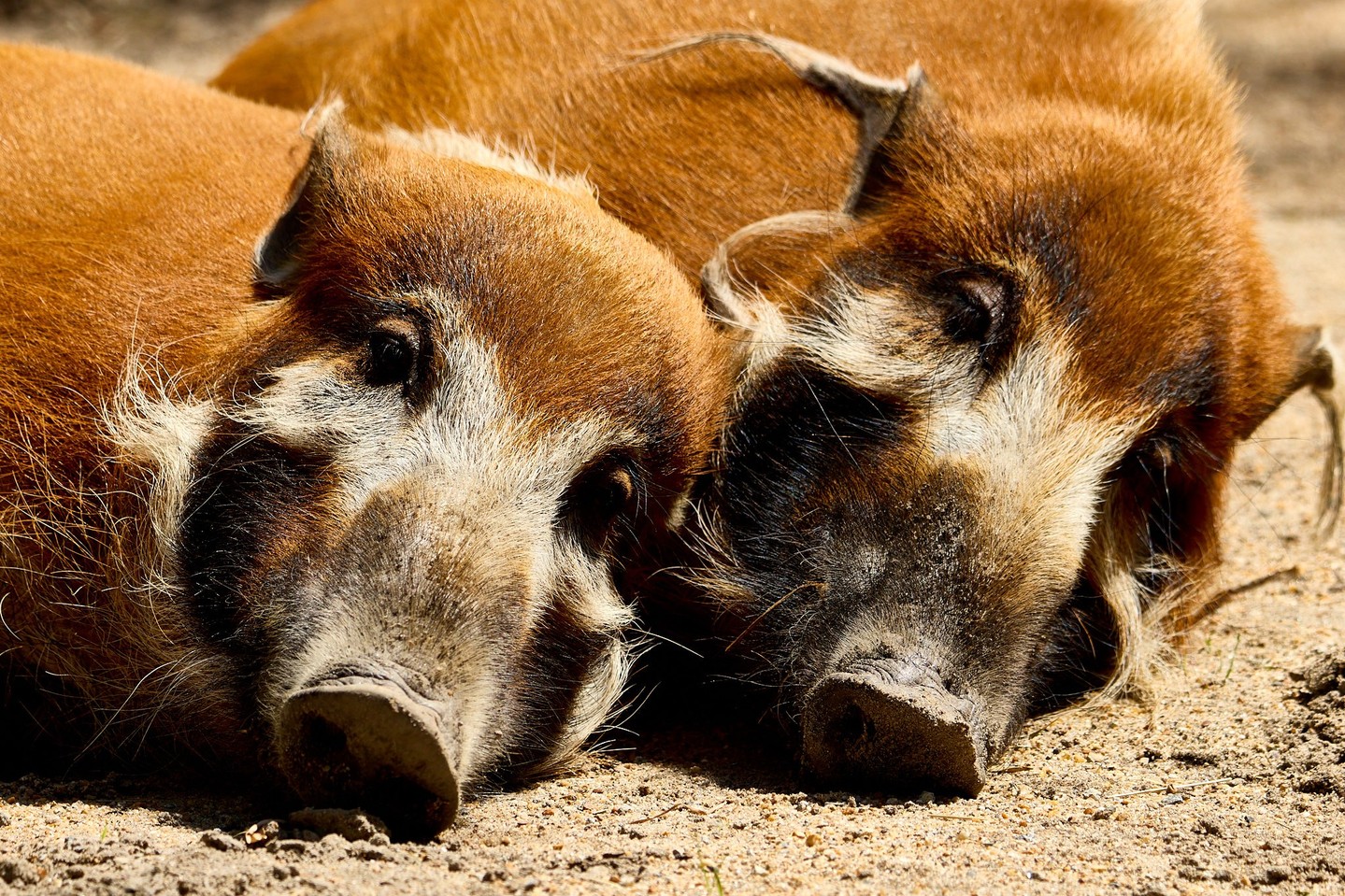- Profiling Red River Hogs: Mrembo and Tikiti’s Characteristics and Habitats
- Understanding the Lifespan and Care of Red River Hogs in Captivity
- Celebrating with Wildlife: The Role of Zoos in Conservation and Public Engagement
- Red River Hog Conservation Status and Efforts
- Educational Benefits of Visiting the Africa Trail
Red River hogs, like Mrembo and Tikiti, are captivating creatures known for their vibrant reddish-brown coats and expressive faces. These animals originally hail from the rainforests and savannas of West and Central Africa, providing them with rich and diverse ecosystems. Characterized by long ears with distinctive black and white tassels, the red river hog’s appearance is captivating and easily identifiable. Mrembo and Tikiti, residing in a managed care environment, allow visitors unique insights into the species’ behaviors and natural preferences, providing a living classroom that combines entertainment with education.
These hogs exhibit social behavior, typically thriving in small groups known as sounders. Such group dynamics are vital for their survival in the wild, allowing for cooperative living and enhanced protection against predators. Each hog plays a role in maintaining the group’s safety and welfare, demonstrating complex social interactions that are vital to their existence. Observing Mrembo and Tikiti on the Africa Trail offers a glimpse into their social structures and communal instincts, which are fascinating for visitors and researchers alike.
In captivity, red river hogs can live up to 15 years, with Mrembo and Tikiti’s care exemplifying best practices in zoo management. Proper nutrition, enrichment activities, and veterinary care are essential to maintaining their health and wellbeing. These animals require diets mimicking their natural foraging habits, rich in fruits, roots, and small insects, to support their physical health and stimulate their innate behaviors. Engaging environments designed to simulate their natural habitat help encourage exploratory and foraging activities, ensuring that hogs like Mrembo and Tikiti remain active and mentally stimulated.
Zoos play a crucial role in wildlife conservation, offering safe havens for species at risk of declining in the wild due to habitat loss and human activities. By housing red river hogs, zoos support breeding programs that help maintain genetic diversity and stabilize animal populations. Moreover, events like birthday celebrations enhance public engagement, drawing attention to the species and its conservation needs. By visiting Mrembo and Tikiti, visitors contribute to larger conservation efforts and help support educational programs that inform the public about wildlife protection and biodiversity.
The conservation status of red river hogs is currently listed as least concern by the International Union for Conservation of Nature (IUCN), yet this does not mean conservation efforts are unnecessary. Historical and ongoing threats include habitat destruction and hunting. Such challenges demand sustained conservation initiatives both in the wild and in human care. Breeding programs and habitat preservation efforts are critical to counteract these threats and protect populations. Zoos aid these initiatives by raising awareness and gathering essential data on hog behavior, which can inform conservation strategies in the wild.
Visiting the Africa Trail is educational, offering insights into the region’s wildlife and ecosystems. This curated environment promotes understanding of African habitats and their biodiversity. By engaging with species such as Mrembo and Tikiti, visitors gain deeper knowledge of the ecological roles each plays, enhancing appreciation for conservation efforts. Educational trails encourage visitors to become active participants in conservation, inspiring future zoologists and wildlife enthusiasts to act in support of global biodiversity.
With Mrembo and Tikiti at the center of public attention, their story enriches the narrative of red river hogs within the context of global wildlife conservation. Through zoo programs and public engagement, we foster a connection with nature that is vital for the protection and understanding of diverse ecosystems. Such initiatives are pivotal, not only for safeguarding threatened habitats but also for nurturing a compassionate and knowledgeable global community.
*****
Source Description
It looks like two girls are HOGGING all the attention today. 🐷 Happy 8th birthday to our red river hogs, Mrembo & Tikiti! 🥳 Be sure to celebrate by visiting them on the Africa trail in the gorgeous spring weather this week. ☀️
Red river hogs like Mrembo & Tikiti can live up to 15 years in human care. We can’t wait to enjoy their company for many years to come! ❤️
📷 credit: Stephen Pezzulich


